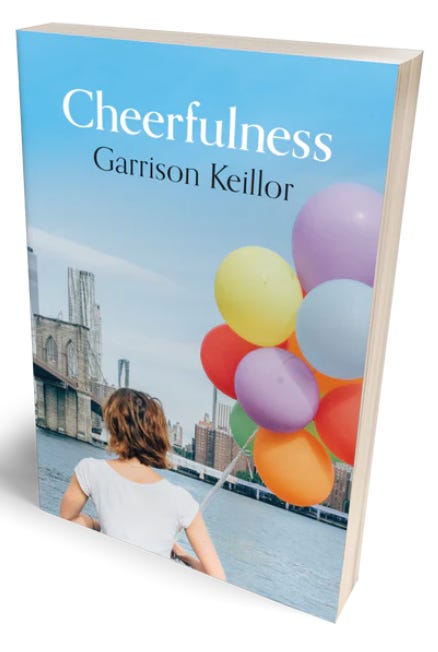“bottle rockets” by Adam Jameson from Small Town. © 39 West Press, 2016.
ORIGINAL TEXT AND AUDIO - 2017
It’s the birthday of English author Ann Radcliffe, born in London (1764). Radcliffe was an early champion of the Gothic novel, which embraced supernatural elements in the story.
Though her books are widely acclaimed for their influence, no one knows the details of Radcliffe’s personal life. When she died, her obituary read, “She never appeared in public, nor mingled in private society, but kept herself apart, like the sweet bird that sings its solitary notes, shrouded and unseen.” Fellow author Christina Rossetti tried to write a biography on Radcliffe, but could not find enough information to go through with it.
Radcliffe’s novels The Italian and The Mysteries of Udolpho made her the highest-paid writer of her era. At the time, her work was classified not as Gothic but as “romance.” Unlike other Gothic authors, Radcliffe’s supernatural happenings always had rational explanation. Her characters suffered from imagined terrors rather than physical dangers, envisioning ghosts or evils that weren’t always there.
In an essay that Radcliffe’s husband released after her death, she writes of the difference between emotional terror (which she embraced) and physical horror (which she refuted): “Terror and Horror are so far opposite, that the first expands the soul and awakens the faculties to a high degree of life; the other contracts, freezes, and nearly annihilates them.”
It’s the birthday of the man called “the poet laureate of medicine,” neurologist and writer Oliver Sacks, born in London in 1933. He devoted his career to studying people with unusual neurological disorders, and writing about them so that they seem like real people and not just case studies. His first book was Migraine (1970), about migraine headaches, and it got good reviews. And then, in the 1960s, he started working with survivors of the sleeping sickness epidemic that occurred between 1916 and 1927. These people had been in institutions ever since, still alive but in unresponsive bodies. Sacks noticed that many of them had reactions similar to those suffering from Parkinson’s disease, so he decided to treat them with the drug Levodopa. Many of them woke up and were cognizant for the first time in 40 years. But it was extremely stressful for a number of them to have lost so much time like that, and most of them went back to sleep. Sacks wrote a book about it, Awakenings (1973). He said, “Awakenings came from the most intense medical and human involvement I have even known, as I encountered, lived with, these patients in a Bronx hospital, some of whom had been transfixed, motionless, in a sort of trance, for decades. Migraine was still in the medical canon, but here I took off in all directions — with allegory, philosophy, poetry, you name it.” In 1990, it was made into a movie starring Robert De Niro and Robin Williams.
He went on to write several more books in the same vein, including the best-selling book of essays The Man Who Mistook His Wife for a Hat (1985), about people living with a variety of neurological disorders, and his book Musicophilia (2007), about the sometimes bizarre connections between music and the brain, and the ways in which music operates on everyone from people with severe neurological disorders to ordinary people who can’t get a tune out of their heads.
He wrote: “To restore the human subject at the center, we must deepen a case history to a narrative or tale; only then do we have a ‘who’ as well as a ‘what,’ a real person, a patient, in relation to disease.”
It’s the birthday of journalist Dorothy Thompson, born in Lancaster, New York (1894). In 1935, a TIME magazine poll ranked her the most important woman in the United States after Eleanor Roosevelt. She was a foreign correspondent for the New York Evening Post in the 1920s, eventually becoming its bureau chief in Berlin. She returned to America after marrying novelist Sinclair Lewis, but went back as a freelancer to Germany, where she so angered Adolf Hitler with her reporting on the Nazis, that he personally ordered her out of the country — the first American journalist to be expelled. Her syndicated column, On the Record, appeared three times a week in as many as 170 papers, and she also had a popular radio show.
It’s the birthday of the artist David Hockney, born in Bradford, England, in 1937. Hockney is considered one of the most influential British artists of the 20th century and had a big impact on the pop art of the 1960s. He grew up in a working-class family and started drawing cartoons in grammar school when he became bored with schoolwork. One of his first works was a portrait of his father, an oil painting that he sold for 12 dollars. Later he received a gold medal in the graduate competition at the Royal College of Art in London. After frequent visits to the United States, he settled in Los Angeles, where he painted his famous series of swimming pools. He said: “I was 18 when I first visited London, I’m very provincial like that, but I must confess the moment I got to America I thought: This is the place. It was more open, with 24-hour cities and pubs and restaurants that didn’t close.”
This year, Hockney’s retrospective at the Tate Gallery in Britain became the most popular exhibition, receiving 478,082 visitors even before its final weekend at the end of May, after a 16-week run.






July 9 sent on May 9, and you want me to upgrade? This level of competence is definitely amateur.